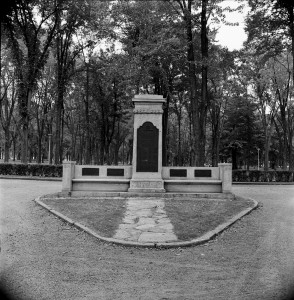Period : After 1950
Throughout the ’60s and ’70s–and indeed up to the present day–one way for women to meet other women in Kingston was through organized sports. For many women, the community created through softball offered validation of both sexual and gender transgression. The ball field was a site where strength and fitness were considered attributes and a teasing toss of a ball or a comradely hug could easily carry undertones of sexual tension.
Yvonne Zipiter traces the appeal of softball for the lesbian community in the game’s evolution as a primarily working-class sport that accommodated the participation of strong, independent, working women. Furthermore, because of its history as a working-class sport and because the game continued to be inexpensive to play, softball was free of the elitism associated with feminist organizations. While these organizations tended to be dominated by white, middle-class women, softball teams — especially in smaller cities and rural areas — were comprised of a much broader class of women. Certainly this is true of Kingston, where the educational background prevalent in feminist circles kept some women from stepping through the doors of the Kingston Women’s Centre. In contrast, although some women from different class backgrounds did participate in the community league, the ball field remained primarily the domain of working-class women. As Donna, a Queen’s prof, remembers, “The differences between softball, than say, volleyball was that softball had a lot of rural, there was a large group from Wolfe Island that would play and [women from] out in the country that played ball and…they were quite the diesel dykes, they weren’t college types or anything else and they played the game better than most guys….They were fun, they were lots of fun and it was fun being part of a good team. But if they went out drinking or something you might go out and have a beer but basically you had to go home and correct papers, prepare lectures, so you didn’t socialize much.” Although middle- and working-class women enjoyed playing ball together, as the “us” and “them” dichotomy of Donna’s statement reveals, class differences were not necessarily smoothly erased by a solid pitch or a home run.
Gay men cruising in the park could, for the most part, assume that the majority of men present were there for the same reason even if they identified as “straight”. In contrast, many women involved in sports were heterosexual and so expressions of same-sex desire had to be negotiated, even within these women-only spaces. The shared sexuality of working-class balldykes was often communicated through a language of gesture and dress rather than words. Explains Jan, “We didn’t talk about sex, didn’t even talk about lesbianism much. [We] didn’t talk about it because it was negative…and some women were still living at home, or were Catholic–it was hard to look at that feeling in yourself.” Balldykes rarely talked about the women they were involved with; rather it was communicated silently that a couple was together or had broken up. Jan attributes the silence to two factors: fear and internalized homophobia. “There was so much fear,” she says, “you might think they [friends] were lesbian but you didn’t want to take the risk of asking.” Many lesbians feared the condemnation of their families, co-workers, and religious communities if their sexual orientation were revealed. In addition, in a time when homosexuality was defined as immoral and perverse, it was difficult, on some level, not to believe negative societal judgements. Although silence could mean safety, it could also make it very difficult for some women to confidently identify that the softball team sustained a vibrant lesbian subtext.


